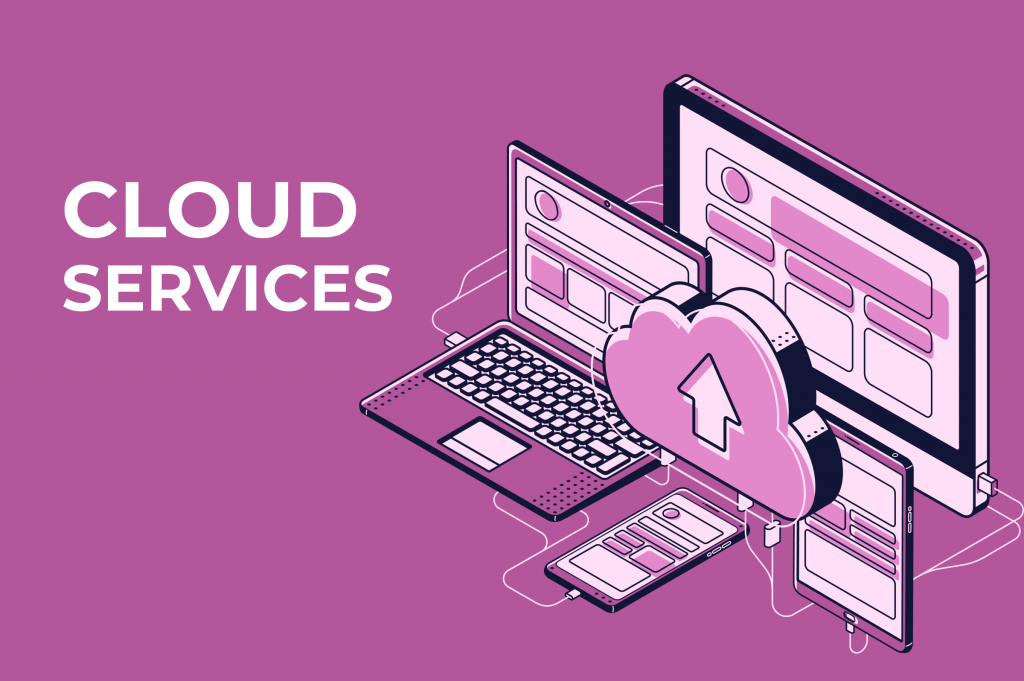Creative destruction, a concept once popularized by economist Joseph Schumpeter, is triggered by digitalization. Still, the need for change must first be recognized and acknowledged. More often than not, it is not only the company but the industry as a whole that must be ready for internal change.
Information technology is the foundation for the entire company’s digitalization. It also opens up great opportunities for traditional market players who are not digital companies by nature. However, the IT fairy tale of using your own servers in the evening, migrating to the cloud overnight, and waking up with new business the following day doesn’t happen in the real world. Digital business transformation examples look a little more complicated than that.
Key points
How cloud services became an engine for digital transformation

Since the late 2010s, cloud technology has become commonplace for many companies. Still, this is not comparable to the pace at which it is being adopted now or the scale at which it will happen over the next five years.
Typically, companies choose one of two ways to begin digitalization: either implement the changes in-house or create a parallel transformation office. The first option allows for a basic infrastructure migration to the cloud with few resources. The second option, with a new team, is more effective. The transformation office conducts a general audit of the company’s business processes, identifying divisions where there are resources for improvement and opportunities for transformation. It gradually builds the digitalization paradigm into specific chains of the enterprise’s activities.
Traditionally, large companies order a strategic digital transformation project from the Big Four accounting firms, receiving a volume of documents as an output. After prioritizing the top-priority tasks, the digital office starts implementing the strategy. It is common for a consultant who supervised the project as a contractor to join the digital office.
Often, our clients come to our SoloWay Tech team with specific requests: they realize that cloud services can help them reduce costs, optimize resources and solve the problem of launching a new product.
At this stage, we engage a digital transformation consulting team that:
- Gathers information, conducts up to 40 interviews with company employees during the audit, processes the data, and translates the customer’s wishes into IT language.
- Offers expertise in the choice of tools. Specific tools are required for certain tasks. An audit usually takes at least a month.
- Evaluates the feasibility of using the cloud by comparing the total cost of operations before and after the innovation. These complex calculations consider the hours of operation of the managed database, personnel, electricity costs, rent, risks of equipment downtime, and many other parameters.
IT does not live in a separate world. While solving local problems, changes are still pursuing the goals of gaining more market share, increasing revenue and business margins, etc.
Cloud technology is a derivative of the global digital transformation process. In most cases, it is the right and comprehensive tool to implement and support business processes. For many companies, using cloud services is the first stage of business digitalization.
For example, a business needs to work with the company’s logistics data and build an optimal transportation route, considering traffic jams, weather, and the number of stops. The task is solved using machine learning models (neural networks). This is not classic IT, and it is difficult, expensive, and time-consuming to attract large teams of data scientists and run such services on your own hardware, so just using the cloud to solve it already leads to significant savings.
Why can’t any business just move to the cloud and feel the savings effect?

This is because the cloud is not a panacea. The process of implementing the obvious tools of digitalization implies a change in approaches to the use of IT within the company as a whole.
Imagine that IT resources, services, and applications are available in unlimited volume at anytime. Let’s say the marketing department needs resources to launch a promotion. This procedure consisted of a string of actions: justifying the allocation of funds, purchasing equipment and servers, and configuring them. Now, the business user automatically receives the necessary resources, uses them, and suspends the work when the task is solved, reducing the associated costs. This changes the company’s IT usage paradigm: launching a new product has become as feasible as writing a letter to supply pens to the accounting department.
Another trend affecting the digitalization of business is the emergence of many cloud-based platform services that do not require lengthy preparation and configuration. They can be used here and now. With the click of a button, a database with ready-made settings is deployed, information is uploaded and analyzed, and the company concludes the product launch. All this happens in cloud systems, and we do not worry about the resources or the staff of specialists who will customize everything from scratch.
Earlier, IT specialists were engaged in the routine process of infrastructure and software maintenance up to 60% of the time. Now, they become involved in the work of the company’s business units, participating in developing new products and creating business value.
External and internal factors of moving to the cloud

Businesses are being pushed to transform by stagnation risks and external conditions, such as a highly competitive environment. If large companies had not started the long process of embedding new technologies in their time, they would not have felt the effect they are seeing now.
The retail industry considers the concept of an average check essential, so many companies apply mathematical models to calculate customer needs. Although the development programs of popular retail chains are designed for up to four years, their business has certainly experienced quick wins by identifying and correcting the most painful points.
Audit of a separate block of such a client’s business may take 2-4 months. Implementation of innovations – up to another 4 months, but it follows that the company will be able to get significant benefits within the first year. By the way, digital transformation in the supply chain greatly raises performance to new levels.
At the same time, external factors limit the opportunities for using cloud technologies in other industries. The banking industry, for example, is heavily influenced by national regulators and corporate regulations that restrict the transfer of infrastructure, data, and applications to the cloud. However, companies under strict regulatory oversight do not need to move all of their IT systems to the cloud to start the digital transformation process. In such cases, a hybrid scenario is used, where some data is used locally and others in the cloud.
Different departments of corporations often have different resource needs, resulting in different IT infrastructures and business applications. The cloud helps equalize this system. Unifying technological solutions with the help of cloud technologies saves money and allows you to work efficiently. Suppose a company or a group of companies sees the digital transformation of business in the creation of an ecosystem. In that case, the cloud becomes almost the only option for realizing such a strategy.
Of course, you must choose the right moment to move to the cloud. When a company still amortizes its capacities, immediate migration to the cloud will not be cost-effective. At the same time, there are non-market factors that reduce the economic effect of moving to the cloud. For example, if the company owns the data center, and the enterprise does not incur additional license costs or has insignificant payroll and electricity expenses.
But even accounting for these nuances, the growing number of requests for digitalization using cloud solutions compared to the previous decade suggests that businesses see the cloud as an opportunity to improve their competitiveness and productivity. Digital transformation is completely changing business processes—from the approach to product development to corporate values and company development.
Conclusion
Cloud services continue to attract enterprises even as they struggle to migrate their infrastructures. Some companies are moving faster, others slower, but the process is irreversible. The movement to the cloud has been gaining momentum for a decade: running infrastructure and assets in a virtual environment gives companies a meaningful advantage in a rapidly changing competitive environment on the cusp of the Fourth Industrial Revolution, which puts the customer at the epicenter of commercial relationships.
Feel free to contact our SoloWay Tech team to integrate your company with cloud services!





